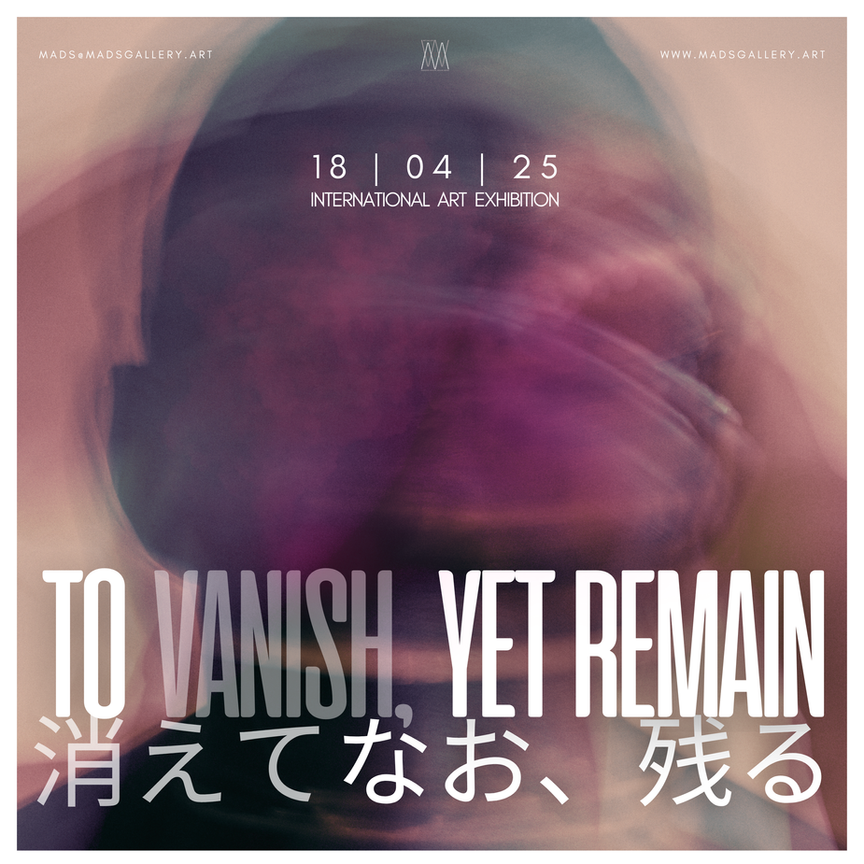TO VANISH, YET REMAIN
2025
Info
TO VANISH, YET REMAIN
18.04.2025
If every trace is destined to fade, why leave one at all?
Perhaps because it is not in remaining but in transforming that a trace continues to live.
We are our passage. We cross the world like a breeze over water, leaving ripples that soon dissolve. Footprints in the sand are erased by the tide, whispered words are lost to the void, the warmth of a body vanishes from the air without a trace. We move like shadows, carving grooves in time, yet time smooths us, erodes us, and returns us to the silence from which we emerged. If our fate is oblivion, what is the point of leaving a mark? If every imprint is bound to disappear, what truly remains of us? Or perhaps the mistake lies in believing that only what endures is real. The human being cannot escape the act of leaving traces. Its very existence is an imprint pressed into the instant. But who decides the fate of those traces? Is it we, with our desperate need for permanence, who attempt to carve into time? Or is it time itself that holds us for a moment only to dissolve us like frost at dawn? Every mark is the result of movement, every movement a wager against erasure. And yet, not everything is lost. Some traces remain but at a cost. They transform, they bend to the laws of becoming, they betray their original form to persist. Are we truly the ones leaving imprints on the world, or are we merely the reflection of those left before us?
Heidegger spoke of being as a “path”, a journey without final destinations, an adventure poised between light and nothingness. Our existence is a tension between the desire to take root and the inevitable condition of being cast into the flow. Derrida, in turn, described the trace as an impossible sign, always caught between presence and absence, an imprint that exists only as it begins to fade. So what, then, is a trace? A testimony to what was or the prelude to its disappearance? And if its essence is precisely its incompleteness, its value not in permanence but in the possibility of being gathered, interpreted, transformed? In Japanese thought, mono no aware celebrates the poignant beauty of things destined to be lost. The autumn leaf leaves no memory of itself, yet its fall is an event full of meaning. It is the moment, not the duration, that makes it real. Similarly, an imprint is not merely the sign of a passage but the delicate boundary between what exists and what is already dissolving. What has vanished was, and what was, in some way, continues to exist. If everything is impermanent, can a mark endure without changing? And what if transformation, rather than stillness, is what allows it to survive?
To Vanish, Yet Remain | 消えてなお、残る explores the tension between the fragility of the mark and its potential endurance. Some traces are erased the very moment they are made. Inks fade, materials self-destruct, imprints disappear as soon as they are created. But others, though altered, persist. A forgotten word finds form in another’s mouth. A vanished image continues to pulse in memory. Absence itself becomes presence. If an imprint must change to exist, does that mean our passage can only survive by betraying itself? Or is it precisely in change that the trace escapes oblivion? If everything is destined to fade, why do we keep carving marks into the sand? If the wind erases all, why do we feel the need to leave a trace? Perhaps because the meaning of existence does not lie in permanence but in the possibility of being gathered, interpreted, carried forward. We do not know which traces will endure and which will be swallowed by the void. But perhaps, among the imprints that vanish, there will be one that resists. Not because it remains unchanged but because it has learned to transform without losing itself.
With this exhibition, MADS ART GALLERY invites us to confront impermanence, the fragility of every mark, and its unexpected resilience. Art becomes a threshold, a space where absence and presence chase one another, where the imprint is made only at the moment it threatens to disappear. What does it truly mean to leave a mark? Is it an act of defiance against time or a surrender to its flow? And if the most authentic trace is not the one that remains unaltered but the one that knows how to transform, to become an echo, a memory? Perhaps, in the dissolution of an image, in the yielding of a form, lies the secret of permanence. Not in what stubbornly remains but in what allows itself to be crossed. Art, like existence, is movement, a passage. Every mark, even the one destined to vanish, is already a birth. Perhaps it is not about preserving but about welcoming. Not about holding on but about listening. Because even the faintest whisper, as it fades, may still resonate in another heart, in another time.
Concept by Lisa Galletti Senior Art Curator




